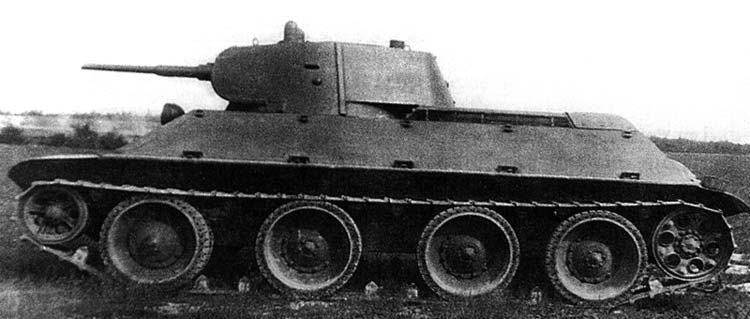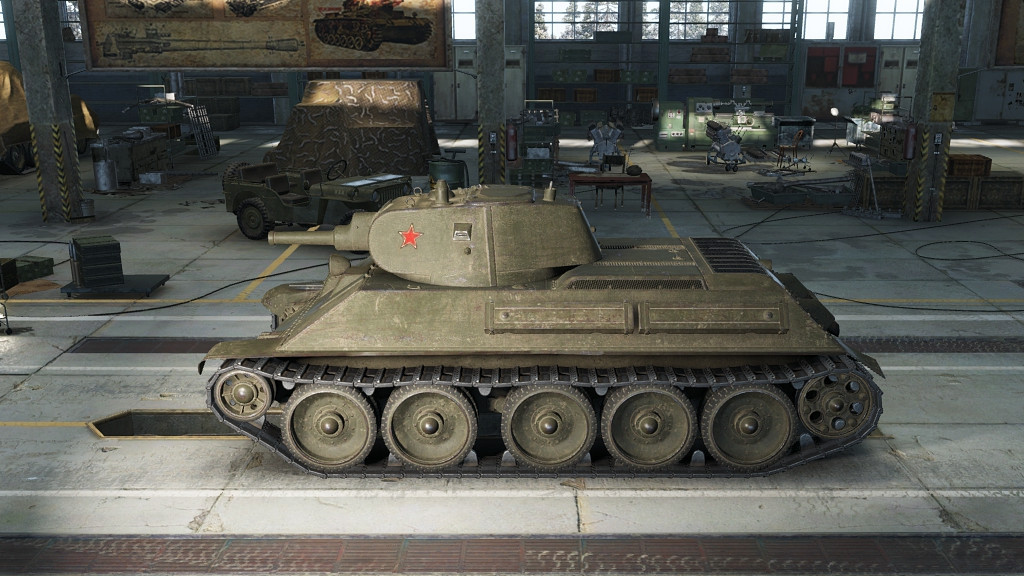Tanks assembled by Soviet designers were considered the best in the world. Huge batches of different models of tanks were exported and shipped abroad. According to experts, many designers have borrowed a lot of technical solutions from these Soviet military vehicles. Among various types of military equipment, a tank deserves special attention, which is listed as A-32 in the technical documentation. You will learn about the history of the creation of the A-32 tank, device, and performance characteristics from this article.
Acquaintance with a military unit
A-32 is a Soviet medium tracked tank. It was represented by just one single prototype, which only members of the government could see in 1939. The show took place at a training ground in Kubinka. As a result, the leadership of the A-32 tank approved and decided to accept the armament of the workers and peasants of the Red Army after constructive improvements. According to military experts, this model served as the basis for the legendary T-34.
Start of design
In September 1938, having examined the BT-20 prototype, Soviet designers were tasked with manufacturing three tanks (two of them should be tracked, and one should be wheeled-tracked) and one armored corps. By 1939, Design Bureau No. 24 prepared several drawings for the A-20 and began designing the tracked version, which was listed as the A-20G.

Later he became an A-32 tank. Due to the fact that since 1930, alphabetic indexes were introduced in the USSR, and the tank itself was assembled at the Kharkov Locomotive Plant (KhPZ), for which the “A” index was listed, this letter designation was assigned to the combat unit. In February 1939, a regular meeting of the People’s Defense Committee (NPO) was held, at which it was decided to allocate funds for further development. Fearing that the designers would not have time to meet the tight deadlines, the military proposed to direct all forces precisely to the wheeled-tracked A-20. However, the head of the design bureau, M. I. Koshkin, convinced the commission that it was necessary to work in two directions at once.
About creating
By May 1939, both versions of the tanks were ready and the developers began their sea trials. During testing, it turned out that the A-20 is more mobile. However, in such a parameter as patency, the A-32 tank turned out to be better. In addition, the chassis of the A-20 made it difficult to strengthen its armor protection and the installation of a more powerful gun. The reverse situation was observed with model No. 32. This technique is with 10mm armor. As weapons in the A-32 tank, a 76-mm L-10 gun was used.
About resolution No. 443
After the tests in Kubinka, the leadership of the NPO ordered to increase the armor protection to 4.5 cm. In addition, the following design improvements were envisaged:
- The tracked T-32 should have improved visibility.
- The tank should be equipped with a 76-mm F-32 cannon, coaxial with a 7.62-mm machine gun.
- An individual machine gun of 7.62 mm was provided for the radio operator.
- The new tank should be listed as T-34.
- By the beginning of spring 1940, work on two tanks should be completed.
About suspension
The equipment was equipped with a Christie type suspension. This design was invented by American engineer John Christie. Unlike the traditional spring, this suspension provided the tank with a large dynamic stroke. As a result, the A-32 could overcome rugged terrain with greater speed. The use of Christie's suspension provided for a decrease in the height of the tank, namely it was with a lower profile.
TTX
The following tactical and technical characteristics are inherent in the A-32 tank:
- This model belongs to the class of medium tanks with a classic layout.
- The combat weight was 19 tons.
- There are 4 people in the crew.
- Total length 596 cm, width 265 cm, height 243.5 cm.
- A-32 with steel rolled surface hardened armor.
- The frontal part of the body at an angle of 35 degrees.
- The armament is represented by a rifled 76.2 mm L-10U gun with telescopic and periscope sights and two 7.62 mm DT machine guns.
- A-32 with a V-shaped 12-cylinder liquid-cooled B2 diesel engine.
- The power unit power indicator amounted to 500 horsepower.
- On the highway, the tank moved at a speed of 70 km / h.
- A-32 with a cruising range of 400 km on a highway, 350 km on rough terrain.
A-32 in World of Tanks
Fans of computer games can “fight” on the A-32 tank. At WOT, it is a fourth-level promotional (previously premium) medium tank that has the dynamic characteristics of a lung.

Judging by the many reviews of gamers, the A-32 is ideal for reconnaissance operations, as well as for the destruction of enemy artillery. To play with this model you do not need to upgrade additional modules. Players note that the tank with high speed, but problem maneuverability, if it is too dispersed. At a sharp turn, the A-32 loses its speed and can become a good target for the enemy. Due to the fact that excellent land mines are provided for this military equipment, it can be used to destroy light tanks. However, during movement, the accuracy of the gun is quite low. For this reason, the A-32 in WOT is not suitable for breaking through to enemy self-propelled artillery mounts. Due to the high mobility of the tank, you can change the flanks online. Its maintenance and repair will cost the gamer pretty cheap. In general, despite the mediocre accuracy of the guns, this tank has a good margin of safety. In the game, it is represented by the already completed prototype T-34 of 1940, equipped with the new L-11 gun. In addition, the tank has a headlight that allows you to conduct battles at night and arrange ambushes.